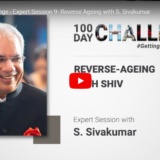Creating Cross-sector Partnerships for a Sustainable CSR

This is an outline of my talk at the CSR Conference organized by the Madras Chamber of Commerce and Industries, Chennai on 2 Mar 2018
A partnership becomes meaningful when its accomplishment as a whole is greater than the sum of achievements of its parts! As is self-evident, the word “part” is an integral part of a “partnership” J
Let’s take a step back, look at the parts in the context of today’s conference, understand their roles and achievements todate:
Some five thousand years ago, our society organized itself into three broad parts.
- For Profit Businesses: Provide goods & services to consumers, create employment, generate wealth, pay taxes
- Governments: Foster competition among businesses, tax them, deploy the resources on common physical & social infrastructure for the welfare of people
- Not for Profit Non Govt Organisations: Keep a tab on 1 & 2 on behalf of people, for their general well-being
One can granulate further and make more parts, like academia (but they could be made up of any of these parts, as in academic institutions for profit or set up by Government or not for profit), or media (again could be any of these three parts). There are also For Profit Social Enterprises and Not for Profit Businesses. Keeping those nuances aside, for the sake of ease, let’s recognise these three parts for our narrative and move on.
What has this socio-economic structure achieved in terms of wealth, welfare and well-being in these five thousand years?
- As of this evening, we have lived through 17% of this year 2018. That’s two out of twelve months. But, do you know that we have exhausted 29% of the natural resources our earth can regenerate in the same twelve months? Which means, we have lived on the resources borrowed from our children and their children. Actually, stolen from them! This description is just a recast of Earth Overshoot Day, some of you would be familiar with. That was 2nd August in 2017.
- Top 1% of the richest people on earth own 50% of all wealth. And, the bottom 50% own a meagre 1%. A statistic we can all be very shameful of…
These “inglorious” achievements were recognized a few decades ago and we have set for ourselves what we called Millennium Development Goals then. We didn’t get very far, so we have re-set for ourselves Sustainable Development Goals, now to be achieved by 2030.
For a more balanced achievement of wealth, welfare and well-being, as envisaged in SDGs, we need to see ourselves as “partners” in the mission than merely as “parts” doing our own bit. All hands must be on the deck. 2030 will just be here, like tomorrow! Each part does have a different and complementary role in this new “partnership” approach.
- Government: For scale. Not just for funds, but for its machinery that’s spread across the nook and corner.
- NGOs: Terrain knowledge. Social mobilization. Community empowerment. For, there’s no better bet than empowered communities to achieve sustainable development.
- Businesses: Surely, not for the CSR money they are manadated to spend. The mandatory CSR spend, aggregating to Rs 25,000 crores, doesn’t even add up to four days of Government’s budget on welfare! It’s actually for their project and financial management capabilities. More importantly, for their entrepreneurial energies, innovation, and for designing the much-needed impact-making interventions.
- In addition to the three parts I had outlined earlier, I will call out a fourth part: Technical & Scientific Establishments – these could be from any of the three sectors – for their domain knowledge and for continuous action learning. For designing best practices based on science and evidence. Otherwise, the interventions end up shortsighted.
It’s easy to play the words, parts and partners, but it is not easy to actually forge and foster partnerships. There are more broken and failed partnerships, than there are successful ones. It’s important to recognize the barriers to partnerships before we move any further.
- Entrenched prejudices colour actions and communications:
- Businesses and Governments think NGOs are too micro-focused and inefficient.
- Governments and NGOs think Businesses are too profit-minded and there’s always something ulterior in their social motives.
- NGOs and Businesses think Governments are just outlay focused and its officers are corrupt.
- Work cultures and practices lead to operational friction and frustration:
- NGOs can’t fathom the need for institutional systems & controls. “Can’t you just trust us?” is their exhortation.
- Government is too siloed and procedure oriented and end up pushing all action to the last quarter of a year! Do you know that some 27 approvals are required to translate an MGNREGA project idea into a reality?
- Businesses expect execution like clockwork, which doesn’t make sense when social capacity of underprivileged communities needs to be built.
- And, once partnering starts, there’s a new problem! Of adversarial posturing by each partner, due to perceived threat to their respective territories.
- We know our bit. You don’t need to tell us!
With odds stacked so badly against partnerships, how do we make partnerships work? Let me share a three-point formula, based on our experience of implementing ITC’s CSR projects in partnership with some 85 NGOs, 9 Governments, and 15 Technical & Scientific Institutions:
- Co-create projects from the beginning. Conceptualise multi-stakeholder projects after explicitly recognizing the complementary strengths of each partner, and how without any one of them the outcomes would fall short of the community needs.
- Design a predetermined review rhythm. A platform of key members of each partner to review progress and remove roadblocks. This way, the engagement becomes more evidence based and resolution focused; otherwise, there’s lot of finger pointing based on different perceptions.
- One of the partners must become an Orchestrator of the partnership and take on the primary responsibility for the project outcomes. To convene and harness the collective power. To make things work.
Thank you.










